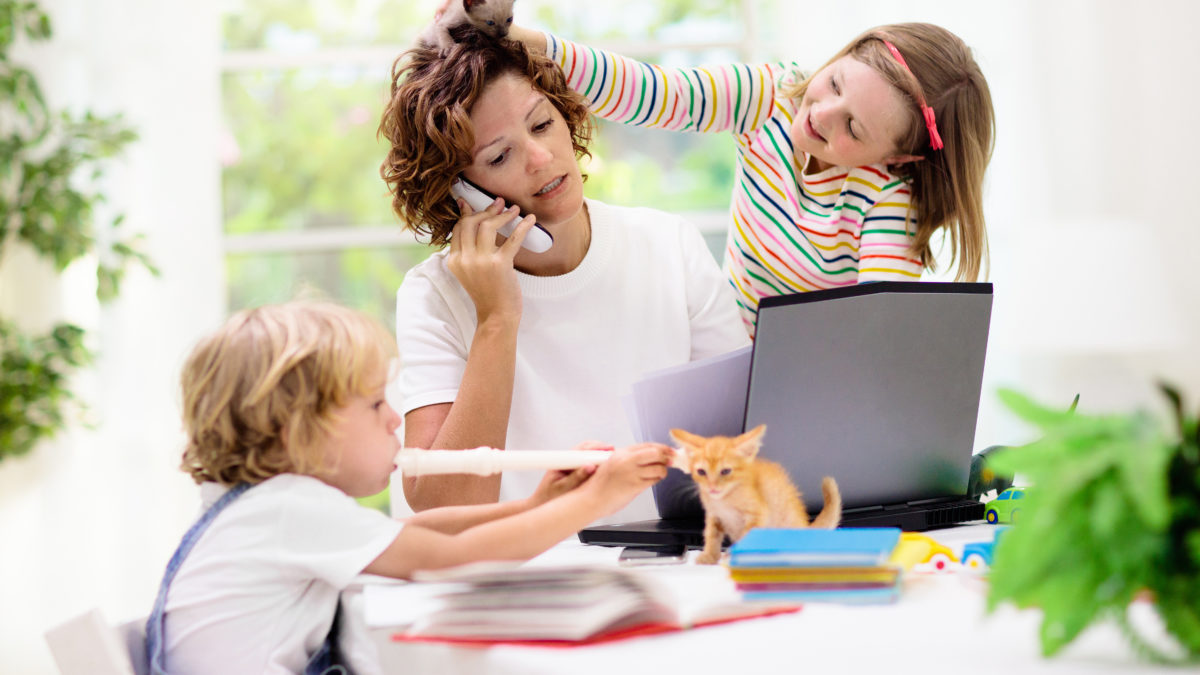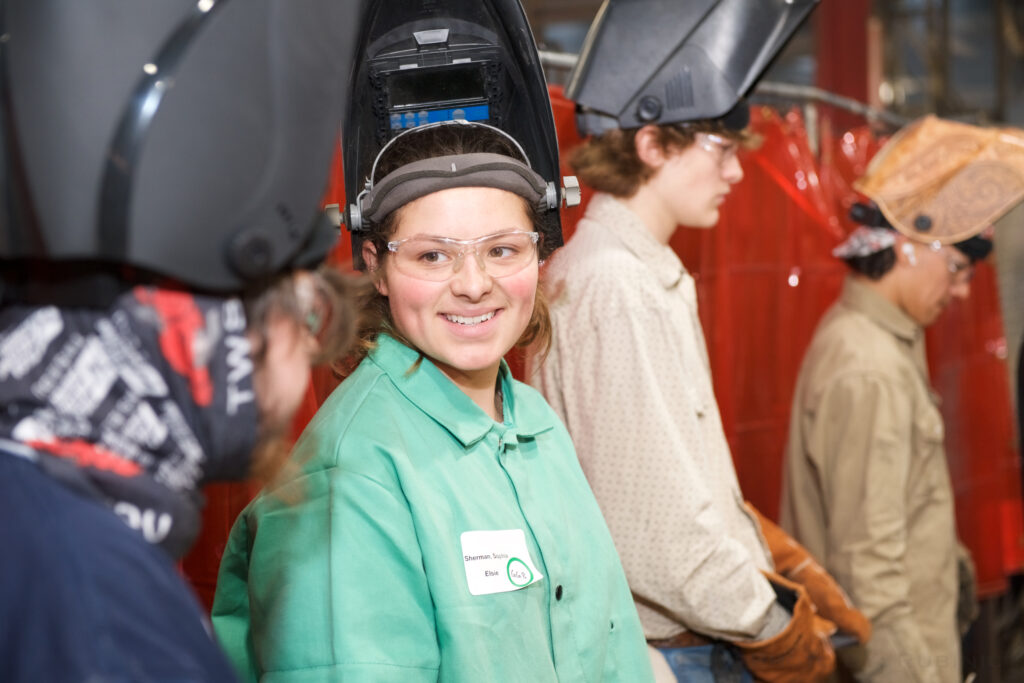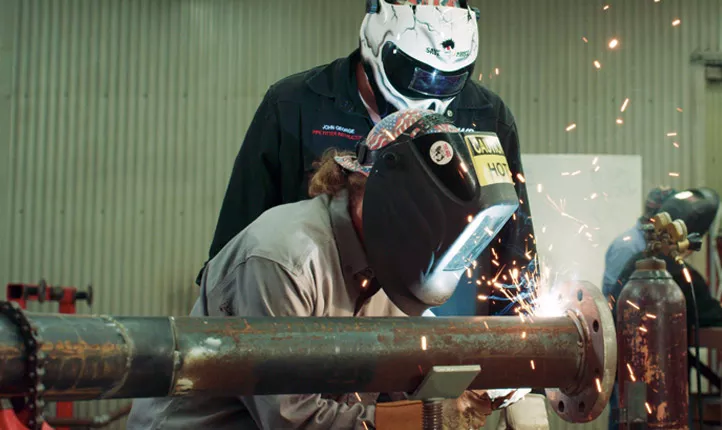Parents as Students
Parents as Students
How The Childcare Crisis Is Affecting Adult Learners
Adults often have to make tough choices when it comes to scheduling: work, parenting, relationships, social and civic obligations, hobbies, self-care. There are a lot of responsibilities to manage and it can require a lot of time. That pull—particularly between domestic and professional roles—has long been a tough one to navigate, but never more so than in 2020.
As the world continues to grapple with the COVID-19 pandemic and the ramifications it is having on just about every facet of our lives, we are realizing how critical many of our systems are—and also how fragile some of them are.
Childcare services are necessary for millions of parents to ensure they can keep their work commitments, meet their educational goals, and maintain their mental health. Without reliable childcare, especially in the midst of other changes related to the pandemic, those who are working to be successful students while parenting may find themselves struggling to keep it together.
The Childcare Crisis
The global health crisis is highlighting many types of systemic inequities, and that goes for childcare too. A recent feature from Politico says there has been “a cascade of crises caused by the pandemic,” and that the childcare industry simply hasn’t benefited from the same sense of nationwide urgency we’ve seen to save other industries—such as airlines. While airlines have profited from a push to provide financial support in the face of restricted and decreased travel, no such national efforts have been made to guarantee available childcare.
Not only have parents been thrown for a loop without schools, daycares, or other formal childcare services, but many of their familial support systems have also been compromised. In two-parent households where both parents work, they may have managed to alternate childcare duties in the past when the occasional school or daycare closure came up. With the broad shutdowns we’ve seen over the past several months, however, that has been much harder to do on a long-term basis. This is especially true for parents who are themselves trying to keep up with closures, physical distancing guidelines, or remote work requirements. And for families who rely on grandparents or other relatives for occasional (or regular) childcare support, they may not feel comfortable putting them at risk of exposure to the virus.
The long and short of it is, it’s affecting everyone. Still, it doesn’t affect everyone equally. Families of color in the United States are disproportionately affected by COVID-19 itself, according to reports like one from Johns Hopkins, for example.
“These communities share common social and economic factors, already in place before the pandemic, that increase their risk for COVID-19,” Sherita Golden, M.D., M.H.S., a specialist in endocrinology, diabetes and metabolism, and chief diversity officer at Johns Hopkins Medicine, is quoted as saying. Golden cites inconsistent access to healthcare, employment in essential fields, chronic health conditions, and crowded living conditions as some of those factors that disproportionately affect communities of color—and that can have a more dramatic impact on contracting the disease.
Black families are also less likely than white families to have at least one working family member when one family member is unemployed, according to the Bureau of Labor Statistics (BLS). This again puts families of color in a more vulnerable state, even before they have to face the risks and complications resulting from the pandemic.
Women As Primary Caregivers
These issues can and do affect a diverse cross-section of parents and caregivers, but they affect some more than others. And they can be especially devastating for women. Women remain most likely to bare the most responsibility for ensuring children are taken care of, regardless of what else is going on in the world, and they’re the parents who are most likely to make professional or educational sacrifices in order to make it work for the kids.
At a time when unemployment rates have skyrocketed across the country and families are bracing for the effects of an economic downturn, women who have already had to choose between advancing their careers and maintaining a household are being asked to shoulder even more responsibility.
As a Washington Post feature sums it up: “The ongoing public health crisis has also exposed inequality in household labor, which is crucial to the functioning of our economy and our collective survival. In most families, women’s responsibilities now include more food preparation, cleaning and child care than ever before, with those who are economically vulnerable facing the greatest challenges.”
Even a year or two out of the workforce can affect someone’s earnings trajectory for the rest of their life; women who have had to take time off work to raise families may see that earnings loss compounded by unemployment or underemployment during this pandemic. Betsey Stevenson, labor economist at the University of Michigan, told Politico that the impact of how we treat childcare now will be felt by the economy—and women’s outcomes—for decades.
Making It Work In School
Of course, all of this is difficult enough for parents who are “only” trying to manage childcare responsibilities and their work. What about those who are pursuing postsecondary education too? If you’re employed, managing your kids’ remote learning needs, and trying to complete your own schoolwork—how can you possibly get it all done?
It certainly isn’t easy, and we won’t pretend otherwise! But there are some things working in your favor if you’re an adult student in 2020. Online program options, flexible scheduling, and career training programs that won’t slow you down with a bunch of general education courses can all mean that it’s possible to still be a successful student even during a pandemic.
And with record unemployment rates and rapidly changing industries in the headlines, competition for many jobs is likely to be fierce. Adding a degree or certificate to your resume can be a great way to help you prepare for a new career or advance in your current role.
More On Education
Let’s Talk Picking the Right Trade School with Universal Technical Institute
Let’s Talk Picking the Right Trade School with Universal Technical Institute: SEASON 5, EPISODE 3 MORE FROM OUR EPISODE ON picking the right career school with universal technical institute Find Your Perfect Training Program At UTI, our mission is to prepare technicians for the careers…
Let’s Talk Women in Welding with Tulsa Welding School
Let’s Talk Women in Welding with Tulsa Welding School: SEASON 5, EPISODE 2 MORE FROM OUR EPISODE ON Women in welding WITH tulsa welding School Contact TWS — Houston, TX Click Here For A Virtual Tour! Location 243A Greens Rd. Houston, TX 77060 Contact tulsa…
Let’s Talk Aviation with Spartan College of Aeronautics and Technology
Let’s Talk Aviation with Spartan College of Aeronautics and Technology: SEASON 5, EPISODE 1 MORE FROM OUR EPISODE ON aviation CAREERS WITH SPARTAN COLLEGE OF AERONaUTICS AND TECHNOLOGY Contact Spartan College — Tulsa Main Campus Click Here For A Virtual Tour! Location 8820 East Pine…
Does your career college enrollment strategy include high school students? It should.
For decades, career college recruitment specialists have focused primarily on enrolling older adults: those with time in the workforce, with families, with less desire and fewer resources to commit to a traditional on-campus, four-year degree. Those adult learners aren’t going anywhere, thanks to employment market…
Making HERstory: Women in Welding Careers
The world is currently experiencing a shortage of qualified skilled welders as part of the greater “Skilled Trades Gap”. Filling this gap is necessary, as welding impacts many industries and supports the maintenance and growth of infrastructure. With the demand increase in welding career fields,…
Leave a Reply Cancel reply
- - ADVERTISEMENT - -
Categories
- Alumni Series (13)
- Automotive (57)
- Aviation (15)
- Business (14)
- Business & Arts (18)
- Career College Expositions (7)
- Career Development (96)
- CCC Blog (1)
- CCC Podcast (9)
- College Resource (90)
- College Showcase – Lincoln Tech (6)
- College Showcase – New Jersey (8)
- College Showcase – Pennco Tech (1)
- College Showcase – Universal Technical Institute (2)
- Continuing Education (154)
- Cosmetology (3)
- Counselor Resources (108)
- Criminal Justice (3)
- Dental Assistant (2)
- Education (109)
- Financial Literacy (17)
- Health Sciences (50)
- Heritage Series (3)
- High School Recruitment Series (4)
- Housing Series (10)
- HVAC (8)
- Imagine America Scholarships (12)
- Information Technology (17)
- Massage Therapy (5)
- Mechanical Sciences (109)
- Medical Assistant (12)
- Millennial Student Series (4)
- News (11)
- Nursing (22)
- Online education (13)
- Pandemic Proof Series (4)
- Personal Finance (17)
- Podcast (90)
- Research (11)
- Road Map Series (2)
- Scholarships (12)
- Social Media Series (4)
- Strata Tech (3)
- Student Success (29)
- Study Tips (3)
- Time Managment (1)
- Top 10 (10)
- Trucking (2)
- Uncategorized (14)
- Universal Technical Institute (19)
- Veteran Affairs (8)
- Welding (24)
- Women in Skilled Trades (3)
Tags
- - ADVERTISEMENT - -







